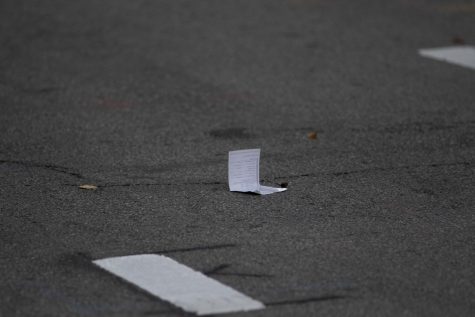Editorial: Columbia’s lackluster active shooting resources leave students in harm’s way
August 5, 2022

Columbia prides itself on allowing the surrounding city to be its campus. With no seclusion from the rest of Chicago, the streets that make up our campus reflect the characteristics of life in one of the largest cities in the country.
While this can be something to celebrate, it also brings more challenges to the campus regarding the safety of students, faculty and staff.
The Chronicle editorial board discussed its impressions of Columbia’s preparedness after news of recent shootings in Chicagoland, including the July 4 mass shooting in Highland Park, which killed seven people and injured dozens more.
Columbia’s Violence Prevention Plan was adopted on Jan. 6, 2015, and has not been updated since its creation, despite changes in our country throughout the past seven years.
The 19-page document discusses a broad range of policies in place against violence that could occur on campus, ranging from combatting physical violence to the potential for media violence through the Computer and Network Usage Policy.
The prevention plan lists programs and support services provided if an active shooter were on campus, including that departments may request an active shooter response training from the Office of Campus Safety and Security.
Outside of the college’s prevention plan, the “Campus Safety” section suggests the Columbia community should learn about the Department of Homeland Security’s “RUN-HIDE-FIGHT” program in response to an active shooter on campus, rather than a program or resource created by Columbia specific to the college. The “RUN-HIDE-FIGHT” program entails evacuating if there is an escape path, hiding if you are unable to run or fighting the aggressor as a last resort if running and hiding are not options.
The Chronicle compared Columbia’s active shooter response resources to those of nearby campuses in the city, such as DePaul University, the University of Illinois-Chicago and Loyola University Chicago, and found grave differences.
The University of Illinois-Chicago has an extensive video on what to do in case of an active shooting that provides specific instructions on how to act, where to go and who to call in this life-threatening situation. DePaul University provides specific guidelines on how to respond to threats of violence, including a video for its students, faculty and staff to view for ways to respond if shots are fired on their campus.
Loyola University Chicago provides a video made by an outside, third-party producer explaining step-by-step how to use the “RUN. HIDE. FIGHT” method, while Columbia just mentions the method. Loyola’s website also provides further information about what to do depending on your location on campus and who to contact.

Columbia does provide its students, faculty and staff with timely alerts via email, text and phone call when there are campus cancellations, weather alerts and crime advisories through Everbridge, its emergency communications system.
Though this tool has been beneficial to the safety of the campus, it raises concern about what more Columbia could be doing to prevent violence and better prepare its students on what to do if gun violence were to occur.
According to the Office of Campus Safety and Security’s crime advisories, there have been five documented instances when a firearm was discharged on or near campus within the last two years, two of which indicate there were no known affiliations to Columbia. The most recent occurred on July 22.
According to the advisory, two incidents occurred on campus in the early morning. At 6:30 a.m., an individual sustained a gunshot wound after a suspected robbery near Roosevelt Road and State Street. Earlier that morning at 4 a.m., a report of shots fired took place at 11th Street and Wabash Avenue with no reports of injury, but an apartment window was struck.
Columbia offered no follow-up to its community confirming a resolution after the incidents occurred.
At the end of every crime advisory, the school includes a brief list of what to do in any kind of threatening situation.
-
“Remain Alert.”
-
“Buddy-Up: travel in groups through well-lit and high-traffic areas after dark.”
-
“Seek immediate shelter in a public establishment if you feel unsafe.”
-
“Call 911 for suspicious public safety street activity and all life-safety emergencies.”
-
“Inform Campus Security of any crime or safety concern.”
These same “general safety precautions” were listed on a crime advisory sent at the end of the Spring 2022 semester on May 31, when the school received a letter that “threatened the detonation of an explosive and violent acts sometime in the future” on campus.
Since the crime advisory, Columbia has not sent a follow-up about advances in the investigation, leaving its campus with many unanswered questions as we enter the Fall 2022 semester.
We call on Columbia to better prepare its students, faculty and staff with a list of resources for what to do in the event of an active shooting on campus. We demand the college update and expand upon the Campus Violence Prevention Plan, which has not been revised or updated since 2015.
We are also calling on Columbia to begin sending a message as a follow-up to its crime alerts indicating if and when a threat or reported crime has been resolved, especially for large scale threats.
We demand better preparation and training that is easily accessible online and throughout campus, easing the fears of all who come to Columbia that our campus is prepared if an active shooting were to occur.







